-
Understanding How Circuit Breakers Work
Your circuit breaker is one of the most essential parts of your electric supply. This amazing innovation delivers power to your outlets and appliances, while making sure that you are protected from sudden electrical surges. In the event that too much electricity is sent through your home wiring, your circuit breaker will automatically shut off power to that area. In the event that you experience trouble with your electrical system, a residential electrician serving San Jose can help restore your circuit breaker to peak operating condition. Here is a complete guide to how circuit breakers work in the home.

Power Distribution Grid
Your home’s electricity comes from a device called a power distribution grid. As electricity is sent into your wiring, it travels through an electrical circuit that contains a hot wire, a neutral wire, and a ground. This system allows the electrical current from the power distribution grid to travel safely through your wiring. Your circuit breaker is at the central point of this alternating current.Resistance
Resistance is another fundamental term that is needed to understand your circuit breaker. While the power distribution grid sends a constant level of electricity through your home, each one of your appliances put up their own amount of resistance to the electrical charge. Resistance is what allows each of your appliances to operate. From your light bulbs to your refrigerator, every appliance that is connected to your wiring places its own amount of resistance against the electrical current that is flowing in your home.Circuit Protection
In the event that your current jumps above the resistance level that an appliance can handle, your circuit breaker will prevent damage to your system. The excessive electrical current will cause your circuit breaker to heat up, resulting in a blown fuse or flipped switch. When this occurs, you may need to replace your fuse, flip over your switch, or contact your local electrician for repairs. -
Choosing a Surge Protector
As a homeowner, there are several steps that you can take to protect your appliances from electrical surges. Along with your circuit breaker, you can also choose to install surge protectors in your building. While some types of surge protectors plug into your outlets, other types of surge protectors connect directly to your electrical wiring. These surge protectors are known as primary surge protectors. In the event of a sudden electrical surge, a primary surge protector will prevent excess voltage from entering your electric panels. Power strips and other smaller surge protection devices are known as secondary surge protectors. Your electrician serving San Jose can help you determine what type of surge protection system will be best for your electric panel . After you install surge protectors in your home, you will have the peace of mind that comes from knowing that your appliances are protected from electrical harm.
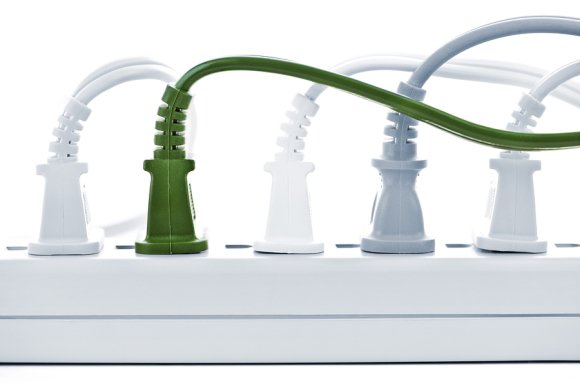
-
Manage Your Electrical Supply with a Home Generator in San Jose
During the winter season, storms and freezing temperatures could put your neighborhood at risk for a blackout. If you are seeking a great way to ensure that your electrical supply is not cut of in the event of an emergency, you may want to invest in a home generator. A generator will provide your appliances and circuit breakers with power, even if the municipal supply is cut off. An electrician serving San Jose can help you choose a generator that is suited to the needs of your home. Here is a quick overview of how a home generator can help you manage your electrical supply.
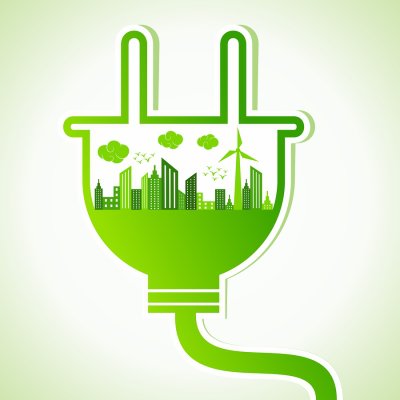
Types of Generators
The electricians at an electrical company can help you decide between two main types of generators to power your home. You will have your choice of either a portable generator or a standby generator. A standby generator will be connected directly to the electric panel of your home, and will provide your home with power in the event that your main electrical supply is shut off.How Generators Work
A home generator is designed to provide you with uninterrupted power during an outage. When the electrical supply to your home is cut off, the generator will automatically begin running. Using an internal combustion engine, the generator will create its own power source. To ensure that your generator will be able to last throughout a power outage, it is important to make sure that you have enough fuel to power the engine.Benefits of Generators
There are many benefits to installing a standby or portable generator in your home. When you choose to install a generator, you can rest assured that you will never experience an interruption in power. For this reason, a generator is a terrific choice for any household that requires the uninterrupted use of power. -
Troubleshooting Electrical Problems in the Home
As a homeowner, there are several basic electrical problems that you may encounter at home. In order to troubleshoot electrical problems, you can use a device called a voltage meter. This device will allow you to determine whether electrical current is running or not. For example, the voltage meter can help you find a problem in a light fixture, electrical outlet, or electrical wiring system. If you are having problems with your electrical supply, do not hesitate to contact an electrician serving San Jose . Professional electricians have the knowledge and skills needed to diagnose and repair all types of home electrical issues. Whether you are having problems with your electric panes or junction box, your electrician will be able to restore your electrical system to great working shape. For a closer look at how to troubleshoot electrical problems in the home, watch this video from eHow.
-
Understanding Some Common Home Electrical Issues
Electricity is one of the most essential amenities of modern life. From your circuit breaker to your electric panels, your home contains a highly sophisticated electrical system. When a component in your electrical system fails to work properly, it is of the utmost importance to contact a skilled electrician for your repairs . An electrician serving San Jose will be able to examine and diagnose your home’s electrical problem. By trusting your repairs to the professionals, you can ensure that your electrical supply is safe and functioning great. Here is an overview of some of the common home electrical issues that are repaired by electricians.
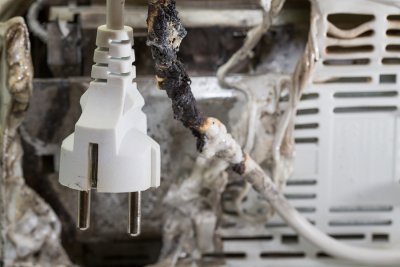
Power Surges
Power surges are among the most common home electrical issues. There are several situations that can cause power surges. For example, a power outage in one area of the home may cause a surge in the rest of the electrical supply. When a home experiences a power surge, the circuit breaker will be tripped. If you are experiencing frequent power surges at home, you may want to consult an electrician for repairs.Sparking Electrical Outlets
Sparking electrical outlets are another frequently occurring electrical issue. While some outlet sparks are normal and harmless, other sparks can indicate a dangerous problem in your electrical supply. For example, the insulation around the outlet wiring can occasionally melt. When this happens, even a small electrical spark can result in a dangerous fire. Water on or near an electrical outlet can also cause sparking.Flickering Lights
A flickering light is not always a sign that you need to change your light bulb. Sometimes, your lights may flicker due to a poor connection with your electrical supply. In order to remedy this electrical issue, you will need to contact a professional electrician. Your electrician will be able to find and repair the precise point where your wiring has lost its connection. -
Spotlight On Conserving Electricity
If your electricity bills have been on the rise, there are several steps that you can take to conserve electricity at home. With a few simple tips and tricks, you can cut back on your energy usage while reducing your monthly bills. One great way to conserve electricity is to invest in energy-efficient appliances. In addition, you can be sure to turn off any appliances that you will not be using when you are away from your home. Energy-efficient light bulbs can also help to make your home more energy-saving. For help troubleshooting electrical problems at home , you can work with a professional electrician. From circuit breaker repairs to electrical wiring services, electricians offer all of the services you need to ensure that your electrical system is operating at peak safety and efficiency. An electrician serving San Jose can help you reduce your energy consumption while getting the most out of your electrical system.
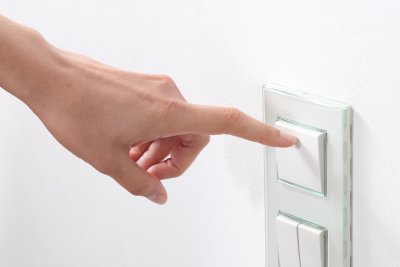
-
Keeping Children Safe Around Your Electric Supply
If you are a parent, it is highly important to teach your children about the fundamentals of electrical safety. By stressing the importance of electrical safety at home, you can help reduce the chances of accidental harm or injury. Some major electrical components, such as the circuit breaker or electrical wiring, can cause significant harm if they are not treated with the utmost caution. To enhance the safety of your home electrical system, you may schedule a safety inspection with electricians serving San Jose . A professional electrician can help you make sure that your home electricity is safe for your children. Here are some top tips for keeping your children safe around your electric supply.

Avoid Overloading Your Outlets
One of the best ways to keep your children safe around your electrical supply is to avoid overloading your electrical outlets. When you plug appliances into your electrical outlets, be sure that you only plug a few items into each socket or extension cord. In addition, you may want to teach your children to stay away from electrical outlets when they do not have parental supervision.Install Tamper-Resistant Receptacles
Another way to ensure that you children are safe around your electrical outlets is to install tamper-resistant receptacles. These innovative devices will ensure that all of your sockets are completely child-proof. The electricians at a highly rated electrical repair company can help you evaluate where tamper-resistant receptacles should be installed in your home.Make Sure That You Have Ground Fault Circuit Interrupters
To enhance the safety of your electrical appliances, you may want to ensure that you have ground fault circuit interrupters installed in key areas throughout your home. These devices will prevent the chances of a family member being shocked in the event of an unexpected ground fault. Your electrician will be able to answer all of your questions about electrical safety at home. -
Safety Tips Around Electricity
Electricity is an important part of every modern home. To stay safe in your home, it is important to be aware of some essential safety tips around electricity. If you need to replace a lamp or fuse, it is highly important to turn off your circuit breaker. Circuit breakers control the flow of electricity to outlets and appliances throughout your home. By cutting off the electrical supply to your circuit breaker, you can help prevent an unintentional shock. With the services of an electrician serving San Jose, you can ensure that your home’s electrical system is safe and properly configured. To take a closer look at the basics of electrical safety, watch this video from eHow.
-
Questions You Should Be Able to Answer About Your Electrical System
Your home’s electrical system is one of its most important features. From your circuit breaker to your electric panels, the electrical system in your home is composed of a variety of sophisticated features. By educating yours el about the electrical supply to your home, you will be able to prevent an electrical emergency. An electrician serving San Jose can help you take expert care of your home’s electrical system. With the services of a qualified electrician, you can be sure that you will not be left without power. To help you test your knowledge of your home, here are some questions that you should be able to answer about your electrical system.
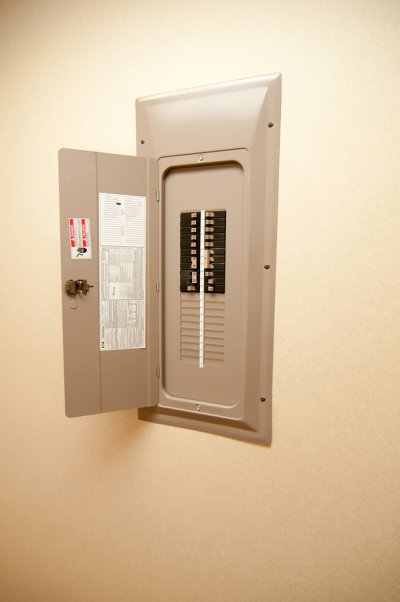
What Is the Difference Between a Fuse and a Circuit Breaker?
Fuses and circuit breakers both serve important functions in your electrical system . You will find these components inside your home’s electrical panel. Older homes may be equipped with fuses. If your home was built after the 1960s, chances are that your electrical system contains circuit breakers.Where Is Your Main Panel Located?
Your main panel is located at the power source for your building. If you open your main panel, you will find all of the circuit breakers that control your electrical supply. When your electrical system becomes overloaded, you may need to open your main panel and flip a circuit breaker switch. A licensed electrician can help you locate the electrical panel in your home.Are Your Outlets Grounded?
Grounded outlets are an important safety feature in a building. When an outlet is grounded, it is less likely to cause shock or electrocution. To determine whether your outlets are grounded, you can look at the prong holes in each socket. A grounded outlet will contain three holes, whereas an ungrounded outlet will have only two. If your home contains ungrounded outlets, you may want to schedule an upgrade with your electrician. -
Leave a Review On Our Google+ Page
Meeting your electrical needs is our top priority. We would love to hear your feedback on our Google+ page!

RECENT POSTS
categories
- Uncategorized
- Delta Electric
- Commercial Electrical
- Residential Electrical
- Electric Circuits
- Dedicated Circuits
- Circuit Breakers
- Electrical Panels
- Electrical Wiring
- Safety Inspections
- copper wires
- Electrician San Jose
- Trained Electricians
- Electrical Services San Jose
- Malfunctioning Electrical Outlets
- Circuit Breaker
- Grounding
- safety
- Flickering Lights
- Arc Fault Breakers
- electrical system
- Aluminum Wiring
- Circuit Interrupters
- House Surge Protection
- Zinsco Panel Warnings
- Wiring Conversion
- GFCI outlet
- professional electrician
- Knob-and-Tube Wiring
- modern home electrical system
- Fuses
- Electric Car Charger
- Electrical Repair
Archives
2025
2024
2023
2018
2017
- December (4)
- November (4)
- October (5)
- September (4)
- August (4)
- July (4)
- June (4)
- May (4)
- April (4)
- March (3)
- February (4)
- January (3)
2016
- December (3)
- November (4)
- October (4)
- September (4)
- August (4)
- July (4)
- June (4)
- May (4)
- April (4)
- March (4)
- February (4)
- January (4)
2015
- December (4)
- November (4)
- October (4)
- September (4)
- August (3)
- July (4)
- June (4)
- May (3)
- April (4)
- March (4)
- February (2)
2014
- December (3)
- November (4)
- October (4)
- September (6)
- August (2)
- July (3)
- May (2)
- April (1)
- March (2)
- February (1)
- January (1)
